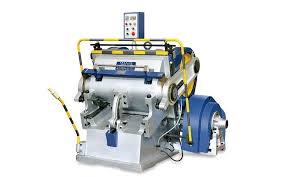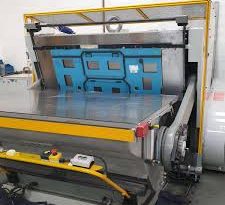What is Die-Cutting Machinery? A Comprehensive Guide to Precision Cutting Technology
Die-cutting machinery is a cornerstone in modern manufacturing, offering precision cutting solutions for a wide array of materials. Utilized in industries ranging from packaging to electronics, these machines play a crucial role in shaping components and packaging. This article delves into the mechanics of die-cutting machinery, its features, benefits, and its extensive applications.
Definition and Functionality of Die-Cutting Machinery
Die-cutting machinery refers to specialized equipment used to cut, shape, and form materials using a die. A die is a specialized tool used to cut materials into specific shapes and designs. Die-cutting machines can work with a variety of materials, including paper, plastic, metal, and fabric, making them versatile for various manufacturing needs. These machines employ either a rotary or a flat-bed die-cutting process depending on the precision, volume, and material requirements of the project.
Technological Features
Modern die-cutting machines incorporate advanced technologies to enhance efficiency and accuracy. Key features include:
- Computerized Control Systems: These systems provide precise control over the cutting process, allowing for intricate cuts and consistent repeatability.
- Automated Material Handling: Automation in feeding and alignment of materials minimizes waste and maximizes throughput.
- Quick Setup and Changeover: Advanced machines offer rapid setup and changeover times, essential for high-mix, low-volume production environments.
Operational Benefits
Die-cutting machinery offers significant advantages to manufacturers:
- Precision and Consistency: High precision cutting ensures that each piece is identical, crucial for assembly and quality control.
- Speed: Automated systems significantly reduce the time involved in cutting, increasing overall production efficiency.
- Versatility: Capable of handling different materials and complex shapes, die-cutting machines are adaptable to various production needs.
- Cost Efficiency: By reducing waste and improving material usage, die-cutting machines can significantly lower production costs.
Applications Across Industries
Die-cutting machinery serves a diverse range of industries:
- Packaging: For creating custom packaging solutions, especially in the consumer goods, food, and pharmaceutical sectors.
- Automotive: In manufacturing gaskets, seals, and interior trim components.
- Electronics: For cutting insulating materials, conductive films, and other components used in electronic devices.
- Textiles and Apparel: For pattern cutting and design applications in fashion and industrial textiles.
Future Trends
The future of die-cutting machinery is likely to be shaped by trends towards automation, increased precision, and sustainability. Integration with IoT (Internet of Things) for real-time monitoring and maintenance, and the use of AI to optimize cutting patterns to reduce waste, are on the horizon. Additionally, there is a growing emphasis on developing die-cutting machines that can work with sustainable materials to meet environmental standards.
Conclusion
Die-cutting machinery is an essential tool in the toolkit of modern manufacturing, offering precision, efficiency, and versatility across a wide range of applications. As industries continue to evolve, the capabilities of die-cutting machinery will expand, making it an even more vital component of manufacturing operations worldwide.

